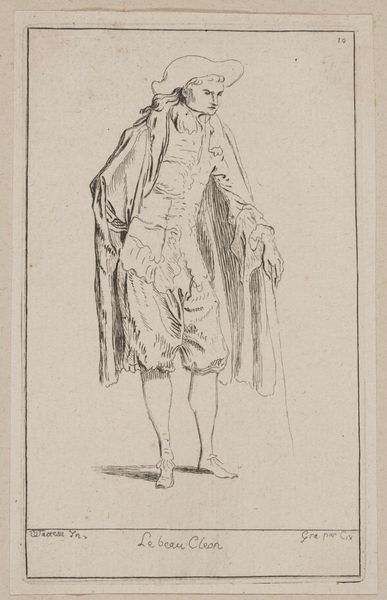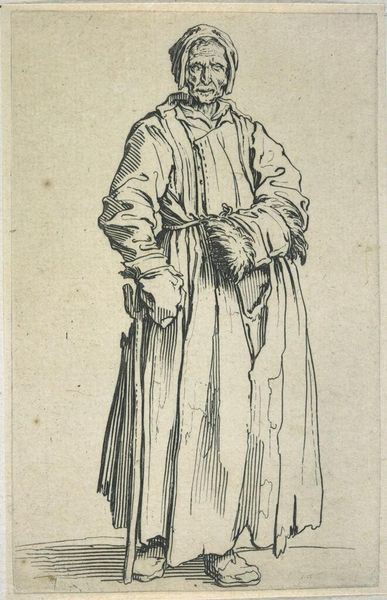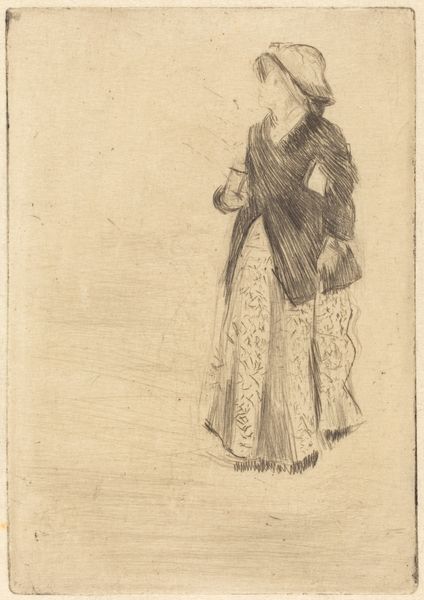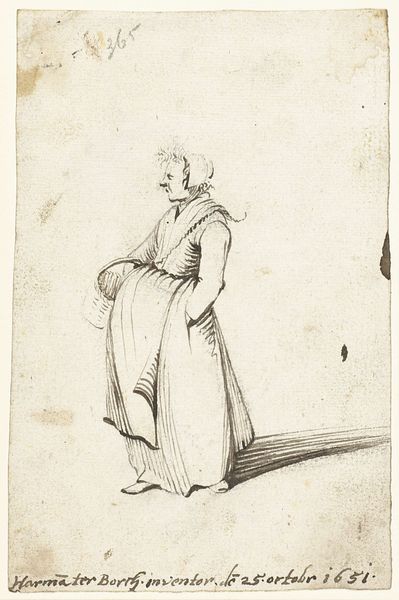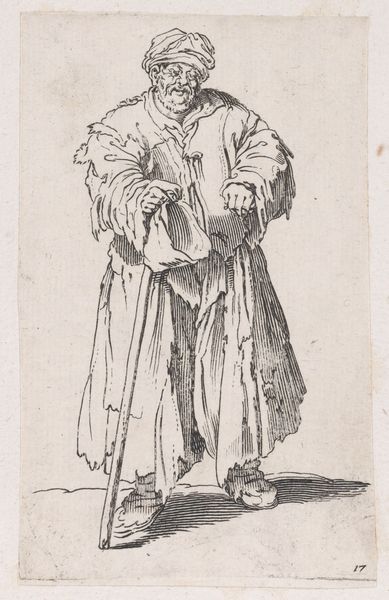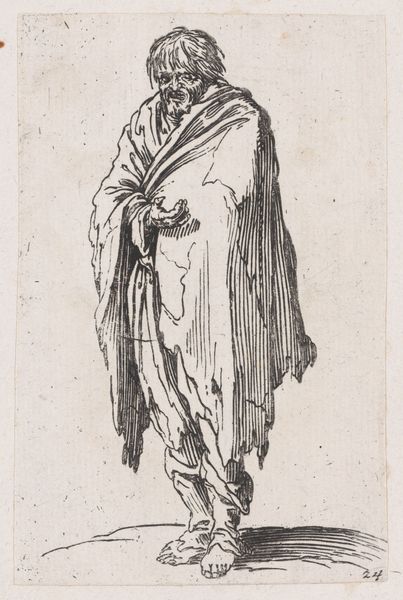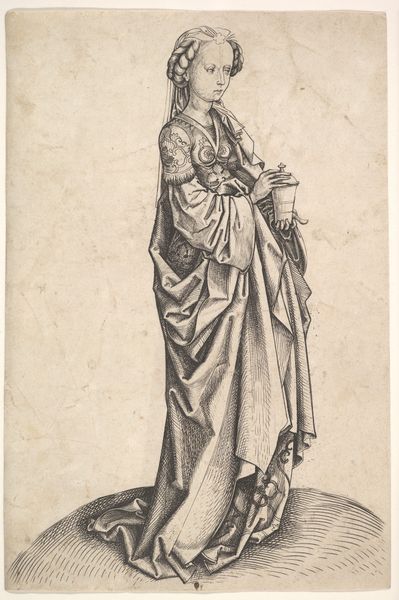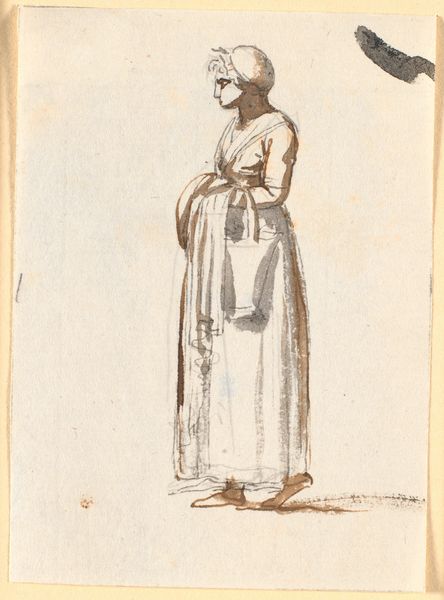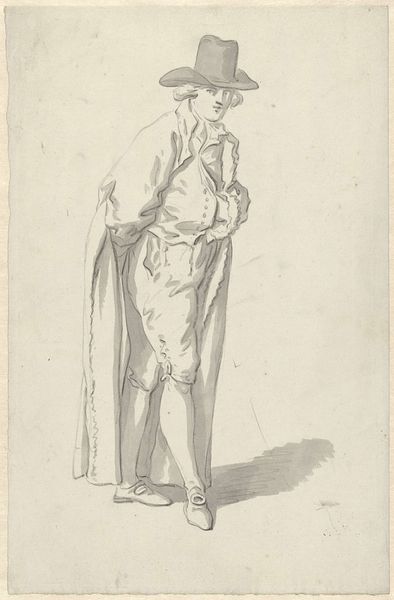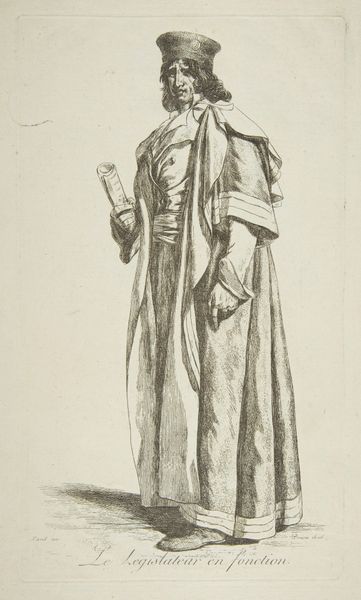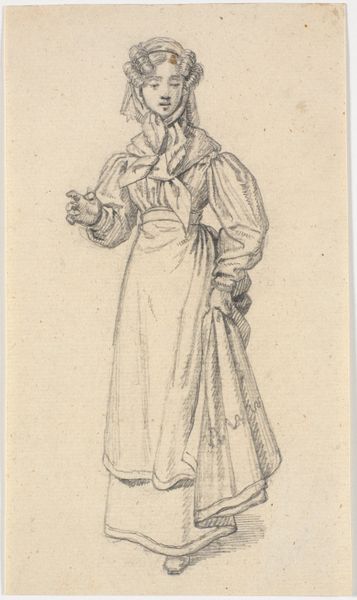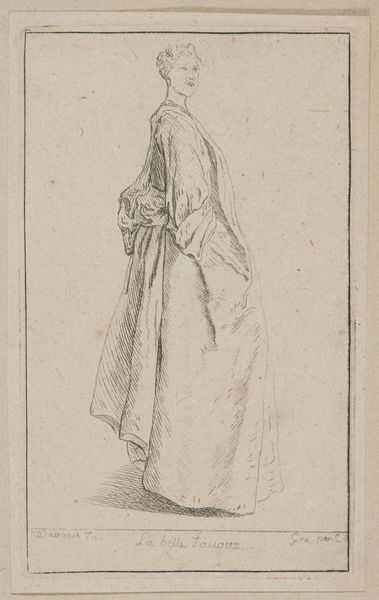
drawing, paper, ink
#
portrait
#
drawing
#
figuration
#
paper
#
ink
#
romanticism
#
genre-painting
#
realism
Dimensions: height 117 mm, width 75 mm
Copyright: Rijks Museum: Open Domain
Editor: This is "Standing Peasant Woman" by Ernst Willem Jan Bagelaar, dating from between 1798 and 1837. It's an ink drawing on paper and what strikes me most is how it seems to be elevated despite its simple and quick creation. It’s just a figure, but there’s a sense of dignity about her. What's your take on this? Curator: It’s interesting that you pick up on the dignity. Considering the period, the rise of Romanticism and concurrent rise in genre painting, these images often carried specific political weight. How do you see her depicted versus others of the time? Is there an elevation here or a subtle romanticization of peasant life? Editor: Well, compared to some paintings of peasants I’ve seen, there's less emphasis on hardship, although I see elements of Realism too. It's like the artist wants to capture her as she is, not necessarily making her overly picturesque. How might its location when created shape its meaning, too? Curator: This drawing falls into a period of social upheaval in Europe, with the French Revolution influencing ideas about class and representation. Works like these, depicting everyday life, gain significance. This drawing moves past a mere rendering of ‘otherness,’ perhaps attempting to represent common dignity. It shows us something that was interesting, real, not from any higher, noble standing. Editor: So, in a way, even this simple drawing on paper engages with pretty big ideas about society and representation. That is fascinating, and gives me even more reason to admire its composition! Curator: Indeed. The value and understanding of such pieces continue to transform through the contemporary views.
Comments
No comments
Be the first to comment and join the conversation on the ultimate creative platform.
